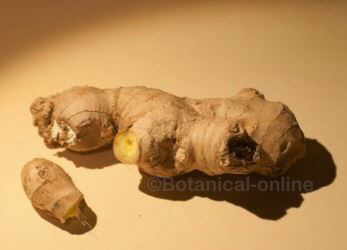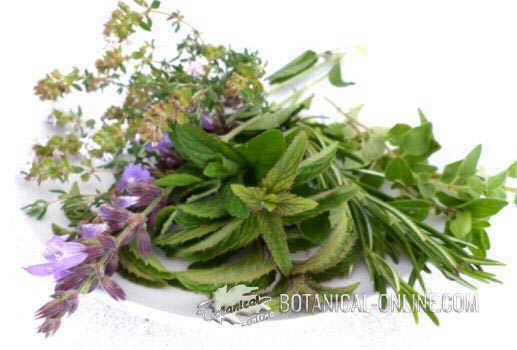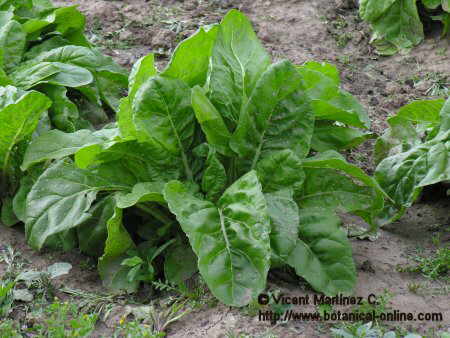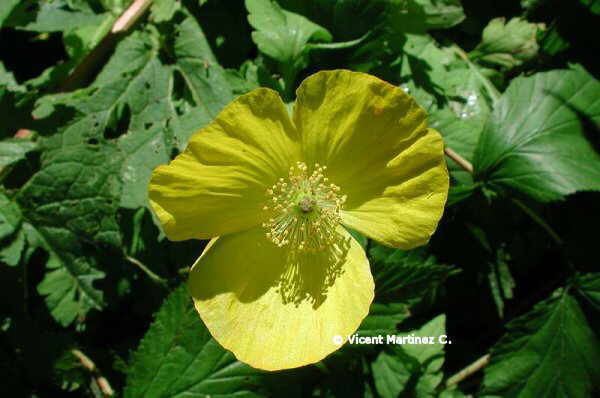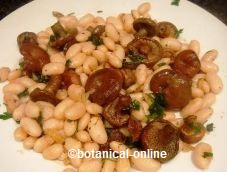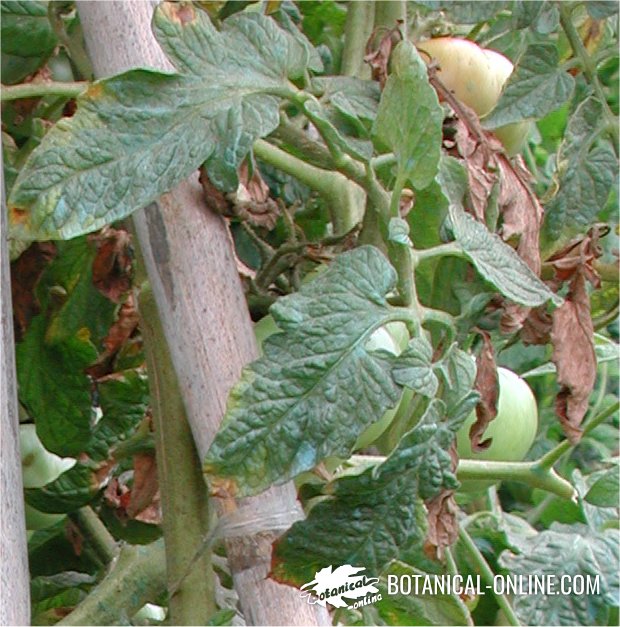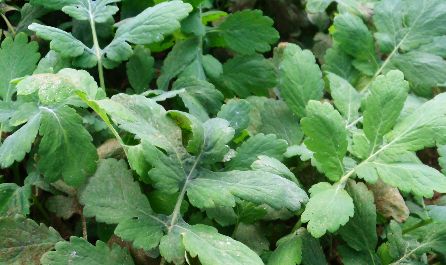How to grow strawberries
![]()
Strawberry plant
Perennial plant sprouting every year. Leaves and flowers spring from almost the ground,both with a similar length.
Flowering stems with no leaves holding flowers with five petals, five sepals and numerous stamens.
At the end of each hairy leaf-stalk we find the leaf divided in three toothed oval leaflets. They are bright green above, more pale and hairy below.
Strawberry plants produce long rooting stolons where new plants may grow. Their fruits, which are commonly known as “strawberries”, are red small berries.
The cultivated bigger ones come from a cross between the wild European and the American ones.
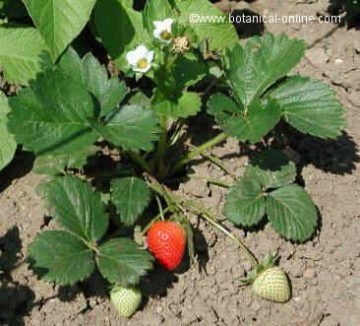

Strawberries, watering and moisture
Strawberries are plants that need to be watered abundantly, especially during the vegetative growth and and while fruits are maturing.
The most effective way of watering them is using drip irrigation. Strawberry plants must maintain a constant humidity in a time of growth and fruiting.
However, they must be cultivated in a soil that should not hold water too much, especially during the winter to prevent fungus growth.
Strawberries grown in greenhouses should be exposed to conditions of abundant moisture for them to grow well. However, it is important to provide them good ventilation to prevent fungal diseases
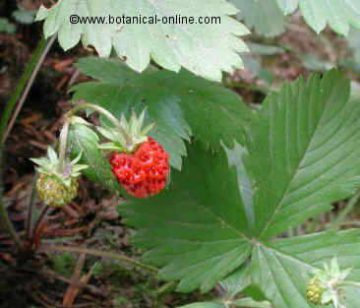
![]()
Strawberries, temperature and exposure
Strawberries need a sunny and warm place. If you prefer to grow wild strawberries, they should be placed in the shade. Cultivated strawberries do not support the shade.
Where to plant strawberries?
In order to obtain strawberries earlier, they can be planted in a greenhouse. In this case, they must be placed in a warm greenhouse, so that the temperature does not fall down 10 º C during the day and 7 ° C at night.
Thus, we can get strawberries one month before those strawberries that are planted outside in the garden.
Strawberries obtained in a greenhouse posses less flavor than those grown in the open air.
Even, if there is no need to plant them in a greenhouse, ripening can also be accelerated by covering the plants with bells in late winter.
It is necessary to protect strawberry plants from strong winds.
What temperature do strawberries need?
They can withstand frost, but once the flowers begin to form, frost damages the plant, that will no longer produce fruit.
While the plant has no fruit, it is very beneficial to be exposed to temperatures below 10 ° C before reaching the proper time, so it can thrive and produce fruit.
When they start to produce fruits, they need high temperatures. The ideal one is between 14 and 21 º C. It should never be below 12 ° C, when the fruit is ripening
![]()
Strawberries types
Depending on the time of planting we have the following varieties of strawberries:
- Summer Strawberries: strawberries come form plants giving the fruits during the summer from plants that were planted in late summer or fall. Among them we have, for example:
- “Calypso” strawberry: It produces very attractive bright red strawberries, throughout the summer.
- ‘Honeoye’ strawberry: One of the species that produce fruits earlier (early summer). It is well-known because of its abundant production of orange-red berries. With very few diseases.
- “Everest” strawberry: Production appears from mid-summer. It produces great tasting fruits.
- Fall Strawberries: Strawberries are obtained in late summer or fall from strawberry plants that were planted in fall or spring of last year. Among them we can include the “alpine yellow” strawberry. It produces very sweet strawberries.
- Wild Strawberries: Strawberries are produced in late summer or early fall from plants that were planted in spring or summer.
![]()
Strawberries, how to plant them?
Strawberries are perennial plants, that’s to say they produce fruits all over their life. However, to ensure a bountiful harvest and to deliver high quality fruits, it is recommended to change the plants every three years. Wild strawberries can be kept a couple of additional years.
Equally important is to plant new strawberries in a different location every three years.
There are different techniques for reproducing strawberries. Among them we will mention:
- By seed: Although strawberries can be obtained from seeds, this form of reproduction is rare, except in professional greenhouses where they try to obtain genetically improved plants.
However, if you wish, you can plant the seeds purchased in specialized stores in a hot bed. Once the plants have been born and have produced a couple of leaves, if the time is right, they should be transplanted into their final place.
- By layering: One of the best ways to reproduce strawberries is by layering of stolons or creeping stems that arise from the mother plant. To obtain a mother plant we should purchase samples already developed in specialized nurseries. In this way we know we are using good quality plants, free of viruses and diseases.
Plants collected in a greenhouse are directly transplanted into the soil, so they can take roots and produce stolons.
How to perform strawberry layering?
For layering the runners we will perform the following procedure: The stolon should be placed under the soil level and covered with it. Later, we will place a stone on top of it in order to avoid the layering to separate from the soil. Then it will be watered very well.
You can also cover part of this stem within a compost container. they you will leave the container on the soil and water it well.
Buried stems will begin to produce roots after one month or so, they can be separated from the mother plant by cutting them before the rooting area: We will also, cut the other end of the layers, leaving only the area where new young leaves have appeared.
Subsequently, we will removed them from the soil, digging around them, trying not to damage the roots. Finally, the new plants will be planted in their final location.
- By division: This is the method used for wild strawberries. New plants are separated from the parent plant and planted in its final place.
Regardless of the method used to get new plants, they should be planted at a distance of about 50 cm on the same row, leaving between 60 and 90 cm between furrow and groove.
![]()
Strawberries, How to prepare the ground for planting strawberries?
Before planting strawberries in a particular place, it is important to prepare the ground properly.
The main thing for the floor is to clean it wll, freeing it of weeds and enriching it with manure or compost. A pre fertilization after plowing the soil, at a rate of 30,000 kg / ha, will favour it.
What other maintenance is required?
Among the main activities that can foster a better crop of strawberries, we can point out the following:
- Padding: It consists of covering the soil with straw or other material to keep moisture and soil temperature. This also will prevent weed growth and will save a lot of water consumption.
One form of padding strawberries is protecting them with plastics. The floor is covered with plastic and a hole is made for each of the plants, so it can grow through it.
- Tunneling coverage: They are designed to protect the plant from cold and to accelerate the ripening of the fruit.
They consist of tunnel-shaped coverings with a structure made of wire and posts covering several ridges. They tend to be at least 5 meters long and a couple of meters high
Also very small tunnels can be designed only to cover a single ridge. They usually have about a couple of meters long.
![]()
Strawberries. Types of soil and fertilizers
Strawberries like light soils with a good humus layer, but they tolerate many soil types. The most suitable pH is one that moves between 6 and 6.5.
They need to have adequate levels of nitrogen, phosphorus and potassium to grow properly and produce abundant fruit.
You will need to fertilize the soil before planting and add fertilizer when needed to balance the soil as a necessary measure to maintain the crop in good condition.
What fertilizers do strawberries need?
In addition to fertilization with manure or ripe compost incorporated into the soil when preparing the soil before planting them in light soils, it is appropriate to apply potassium.
A soil test can also detect the absence of magnesium. Another important mineral is phosphorus. Fish meal is a good resource to provide this mineral to the soil, together with nitrogen and potassium.
Limestone soils are amended by adding peat
![]()
![]() More information on strawberries.
More information on strawberries.

